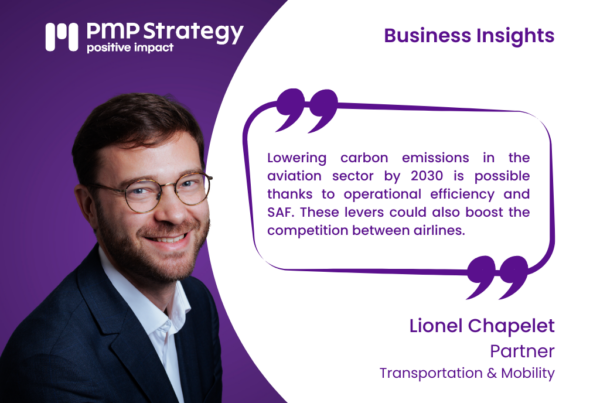News always holds surprises. On December 4, two separate and a priori unrelated conferences collided in the hushed universe of Parisian meetings: the list of city, rail and transport mobility, in the chic Hôtel des Arts et Métiers, then the meeting of the Paris School of Management at Engie’s headquarters in La Défense: “What future for mobility in large cities?” Or how the pragmatism of the field is opposed to the prospective surges that promise the mobility revolution.
The very theoretical theme of the VRT opening conference “’Mobility as a Service’: is this the future? “Was thus transformed on D-Day into” New mobilities, smart cities: five experiences that work “: here are our 3 national musketeers Keolis, Transdev and RATP Dev present their experiments in their respective DSPs, alongside an EPIC SNCF rather passive and a frankly active agglomeration (Mulhouse Alsace).
Experiments that are a bit technical, with rather reduced perimeters for Keolis and Transdev who are slowly but surely advancing their pawns in the new services: for the first, validation by bank card in Dijon, considered a real success and which reaches 2% of journeys of the operator, mainly targeting tourists; for the second four autonomous Renault Zoé which run at 30 km / h in an industrial zone of Rouen where the TC offer is non-existent, in a partnership where Renault, Transdev and Matmut are experimenting with the blessings and the subsidies of the metropolis and of the region (11 M € including 4 M € of public money).
However, these two cases clearly reflect a focus that has finally materialized towards concrete use cases of a technological innovation that has been in a loop for years, that is to say since we were promised ITS and the new world of PACE mobility – personalized, autonomous, connected, electric (Transdev) – or CAPE – connected, autonomous, shared and electric (Mercedes), we do not already know too much.
We find another buoyant wind at RATP Dev, data, its value and its use, under the pragmatic gaze of those who experienced this non-revolution: “we had solutions but no one had a problem! “. In Casablanca, RATP Dev developed the genesis of Citio (which was not even mentioned in the conference) with definite potential for other applications and other networks, starting in Riyadh. Or how we finally found value-added use cases in the detailed analysis of operating data (including ticketing!) To improve knowledge of customers and network problems, the two being obviously intrinsically linked.
As for the SNCF on the EPIC side, we understand that we are relying above all on the Keolis subsidiary to innovate when we embark on autonomous mobility through an engineering project which is certainly technically very interesting but without being integrated into an effective demand for mobility. urban or peri-urban and on a likely uncertain and certainly distant timeframe (“not before 2020”). However, the SNCF has many assets to promote, starting with its land: where is there still room for access to the heart of each city, if not on old freight tracks , the overhaul of certain harnesses or more directly the renovation of land unused by the SNCF?
But it is ultimately on the side of Mulhouse, that is to say on the side of the demand or of those who interpret it and make it its spokesperson, even in an agglomeration of intermediate size (280,000 inhabitants ), that we find the experiment which seems the most transformative of mobilities. Thus, simplifying uses, developing pay-per-use, creating a “mobility account” which opens the way to simple, joint and complementary use of the different modes of the city (public transport, parking, VLS, car-sharing), would make the happiness of both the different actors and the inhabitants? As rightly pointed out on this occasion, the two pillars of this success of the first “French-style MaaS” are the double co-construction, on the one hand with each actor and its own challenges, on the other hand with end users,with a view to maximizing the value of the service. As for integrating the last structuring mode, the TER, the SNCF still needs to evolve on a post-payment logic culturally very far from the railway tradition and without even addressing more pragmatic-tariff logic on revenue impacts.
The break could not be more frank with the 2 nd conference of the day, “What future for mobility in large cities?” ”, Organized by the conference cycle of the Paris School of Management and Engie, and moderated by P. Pélata, ex-CEO of Renault and current consultant, Mathieu Dunant, RATP innovation director, and Franck Bruel, DGA Engie’s France B to B business unit. Or how to find oneself immersed in the world of autonomous vehicles that will roam our cities tomorrow (in Phoenix), the day after tomorrow (in California) or in a few years in Europe.
“There is a solution for each person / goods mobility, each local reality”, Mr. Bruel will repeat. Nevertheless, it is difficult not to project ourselves into a world where the private car is definitely replaced by small autonomous vehicles which will push us back towards heavy infrastructures (the RER A still has a future), generating a general efficiency measured by various computer simulations (in particular by the OECD in Lisbon): elimination of congestion and improvement of travel times, division by 10 or 20 of parking needs, i.e. a lot of space given back in the city, all with electric vehicles obviously without CO 2 or other particulate emissions and significantly less noisy.
So of course there are a few small subjects to deal with between now and then, on the design of vehicles designed for carsharing (“the business class of the plane: we are next door, but we don’t see each other, we don’t see each other. sent not ”? P. Pelata), over the period of transition, potentially inefficient and destructive of value as long as the individual vehicle continues to occupy the roads, in the areas of relevance, starting with the peri-urban areas of large agglomerations (the first autonomous link will be La Défense – Roissy before the Grand Paris Express fills this gap?), on the problems of fleet management, upkeep, maintenance and connection to the electrical network of thousands of vehicles,and without even delving too deeply into the issues linked to the saturation of the structuring TC network which remains essential in these models (even if we automate the central section of A or if we make an Eole in two branches) or touch the number of EPRs or wind turbines, according to religious convictions, which will have to be built to supply ex nihilo a fleet of electric vehicles.
A world of the offer therefore, with its classic questions on data protection, in an algorithm that will permanently offer us individually the most suitable offer, or even the vulnerability of the system, in a world of all interconnected vehicles (a foreign virus that causes a breakdown: what a cataclysm on the activity, not to mention the issues of health, cleanliness …).
But not a word on a subject which nevertheless seems to be an essential wheel of these new coaches: what changes in the uses underlying these new forms of mobility? Even if indeed this universe of autonomy only fits into a world of MaaS where the vehicle is one means among others which is only used in the most suitable cases, how can we anticipate the biases inherent in these models: the value of transport time finally regained as a structural incentive for urban sprawl and longer travel times, opposed to a limit on individual freedom in favor of collective efficiency. We are talking about an increase in catchment areas, therefore of the general value, but what about the overall impact on society?
So of course we dive into it willingly, and we want to see, even without having gone to the end of sufficiently thin models as underlined by Mr. Pelata, that this world is coming and that it has certain advantages for peri-urban mobility. in particular and for the general efficiency of transport; that it would be good to support the French or at least European sector so as not to leave everything to Waimo and its billions of virtual kilometers in advance, which, even hampered by regulatory complexities or the management of a public service, will be able to capture the bulk of the value. This world will come, and regulations are already to be expected. It remains to be taken into account as a common factor between all its components, from energy to sociology, from the car to town planning.
Hugues Marchal
Photo credit: CHOMBOSAN VIA GETTY IMAGES




